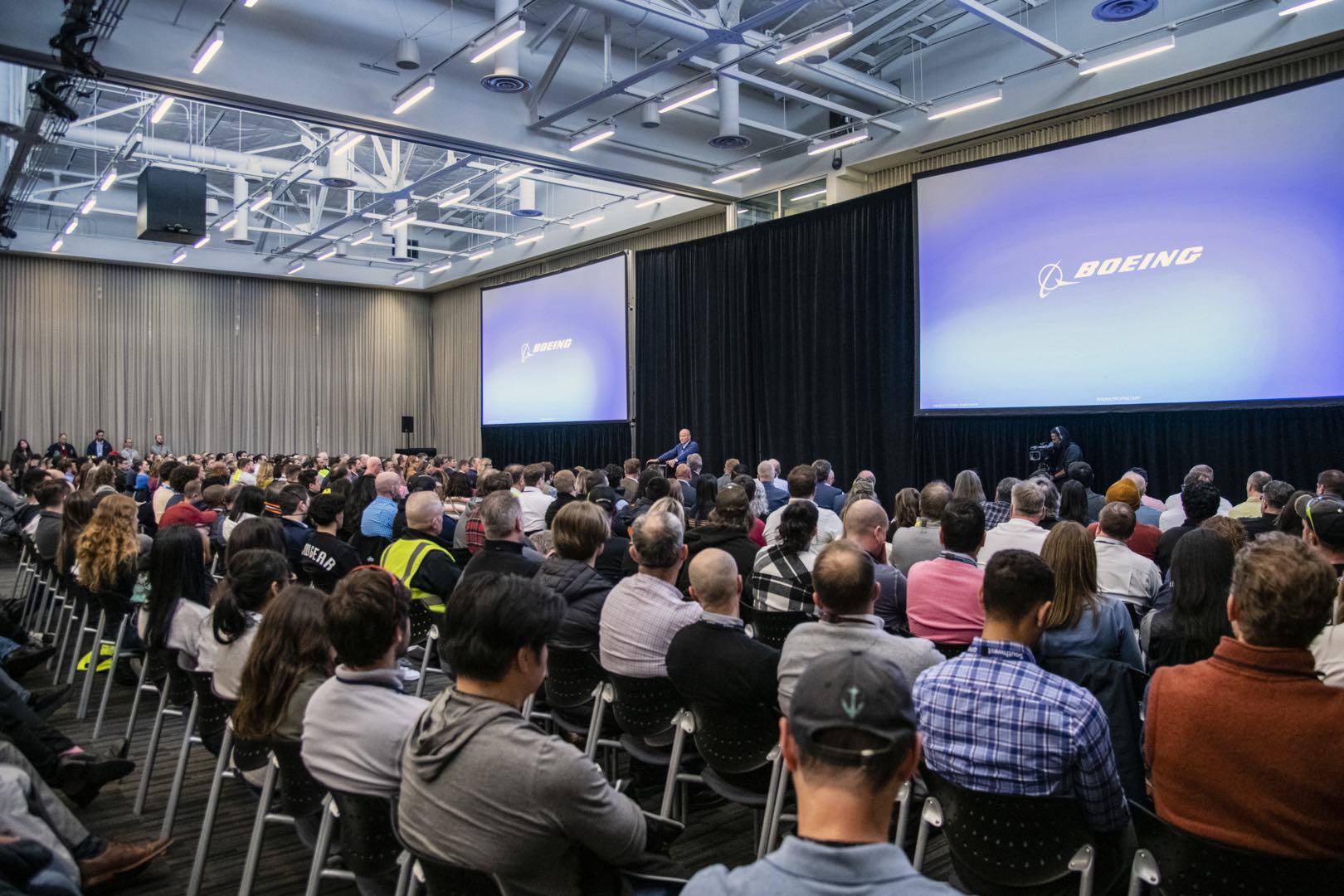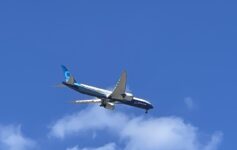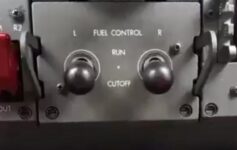
Boeing CEO David Calhoun has admitted to a “mistake” concerning the Boeing 737 MAX 9 after last Friday’s incident on Alaska Airlines, but has not specified what that mistake was. It makes his entire set of remarks nothing short of enigmatic.
RE: 737 MAX 9 – Boeing CEO Admits “Mistake” But Doesn’t Elaborate
Boeing executives were slated to converge at a leadership summit yesterday planned long before a door plug detached from an Alaska Airlines 737 MAX 9 five minutes after takeoff on Friday when the aircraft was at 16,000 feet. The detachment rapidly depressurized the cabin and left a gaping hole in the fuselage of the plane. After federal regulators grounded 170 of the jets on Saturday, the retreat was called off. Instead, Calhoun appeared in an employee town hall in Renton, Washington on Tuesday.
“We are gonna approach this—No. 1—acknowledging our mistake. We’re gonna approach it with 100% and complete transparency every step of the way. We are going to work with the NTSB who is investigating the accident itself to find out what the cause is.”
What mistake is that? If the “cause” of the accident is not yet known, isn’t an apology rather premature?
In investigating it 737 MAX 9 aircraft, both Alaska and United have reported “loose parts” around the door plug area.
Perhaps Calhoun is getting at the fact that any way you slice it, Boeing comes away looking bad. Whether engineers sloppily did not drill in bolts or whether a design defect loosens such bolts over time, this latest issue further clouds the 737 MAX program.
“MAX has been on a journey—no doubt about it. We work our way through them—we do it diligently.”
But perhaps not diligently enough. He added:
“Moments like this shake them to the bone, just like it shook me. They have confidence in all of us—they do—and they will again.”
That’s likely true since Airbus and Boeing are the only big games in town…but is equally premature at this point and represents more wishful thinking at this point.
You can review his complete remarks here.
CONCLUSION
I’m wondering if Calhoun was actually talking without saying anything. It is good to rally the troops, but what exactly is Boeing apologizing for at this point? Finally, a big pet peeve of mine: apology may mean expressing regret today to most people, but its Greek root means defend (exactly the opposite of expressing remorse).
We’ll see what else comes out of Boeing this week as it continues its damage control.
image: Boeing




I have read elsewhere that Alaska is unable (maybe unwilling) to disclose further details on their maintenance of the aircraft prior to the incident due to NTSB requirements. I have to imagine that Boeing has similar views or requirements and to release the video, it would need to be vetted as such. The video indicates another executive would be discussing details, which suggests they do have more information and perhaps that information was even shared later. Given that historically Boeing has always intentionally had a culture that would distance the company from problems such as this, I think it was good for him to set the tone that this time it would be handled differently both in public and in the company. Many of these same employees were working on this same assembly that created the two aircraft that crashed, it is important that messaging such as this occur up front. While there is much more to do both internally and in public, I actually think this was a good first step at shifting the culture at the company. To be sure, it is just a first step.
Agreed, well said.
Smooth-talking Baloney .
‘Boeing Door Blowout Reveals Cockpit Security Problems As Well’
‘That meant the pilots were subjected to the deafening wind and noise from the back of the plane—and also made the cockpit accessible to anyone inclined to try to force their way in.’
National Transportation Safety Board chair, Jennifer Homendy, said “They [the pilot and copilot] had trouble hearing each other, they had trouble hearing air-traffic control and they had trouble communicating during the event.”
Those comments speak for themselves.
The only mistake here is the board agreeing in paying him a huge fat bonus. How about correcting that mistake?
Reminds me of a famous preacher who had an encounter with a prostitute at a seedy motel in the metro New Orleans area.
He admitted he had “sinned”, but would not admit to the details.
Is there a parallel here???
It’s step one of sweeping this under the rug before the microscope moves elsewhere on the plane. Does this exact bolt setup exist elsewhere on the plane that might also need inspecting? Perhaps also on the Max 8? Boeing (and their insurers) will be quick to avoid that question being asked.
What mistake? Well, therein lies the tale. Although it’s pretty obvious that there was a root cause for what is being found in the door plugs, and equally obvious that this is NOT a maintenance issue, why this happened is unknown. And the investigation into “why” fasteners weren’t fastened properly and why nobody caught it will surely uncover some things that Boeing would prefer not to have everyone find out about. So, yeah, admit “a mistake” and hope it goes away and everyone forgets about it. That’s their strategy.
I am appalled at the depths to which this once great and honorable company have sunk to. This is what happens when you put Wall Street rump swabs run an engineering company.
Boeing owns this problem no matter what is found. Hence acknowledging whatever the mistake is on Boeing, Calhoun is apologizing to its operators and their customers for the difficulties ahead and signaling this is not going to be a fast fix. It will be much more than new bolts, hinges I suspect.
I’ve watched the steady downfall of Boeing after the bean counters started running the show and reducing everything to dollars and cents. Their QA program is a shambles and it appears some of their suppliers have the same kind of issues. This is never going to get better until the culture truly shifts and I don’t see any sign of that. Sad to see the state of a such a former iconic company.
Hopefully he was apologizing for the halfwitted decision by legacy McDonnel Douglass management to move Boeing HQ from right next to where the planes were designed and manufactured in Seattle to Chicago. That intentionally made it vastly more difficult for engineers to reach executives in a timely fashion to correct problems. From what I read, after the merger the new management team grew frustrated with always being cornered by pesky engineers trying to solve problems and decided to move HQ to a place where the engineers would actually have to arrange a meeting in advance. The next planes that came out were the 787, 737MAX, and the troubled new version of the 777. Seeing a pattern here since the move?